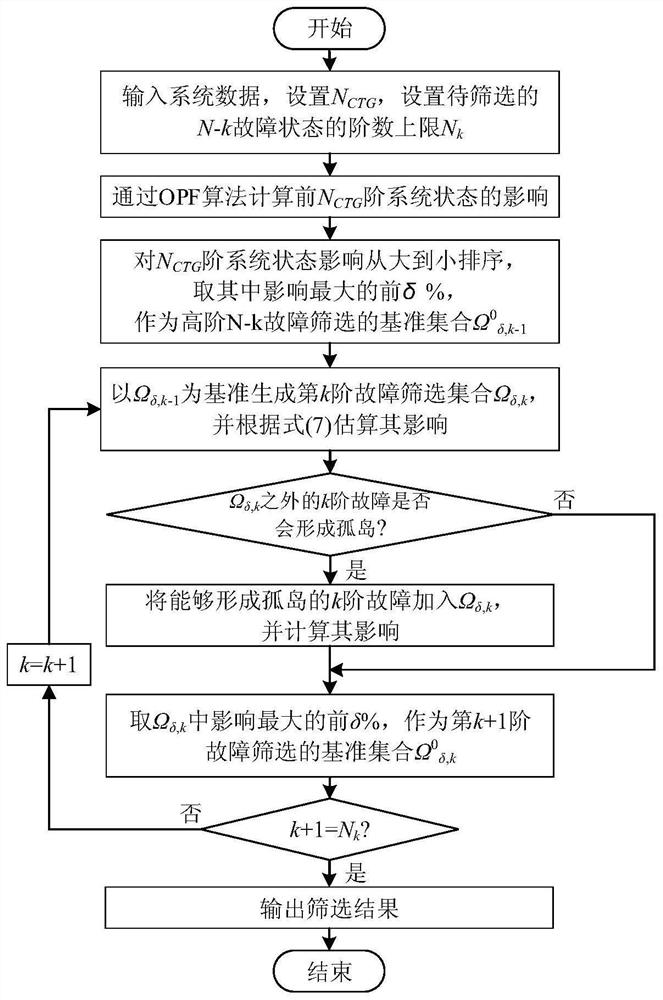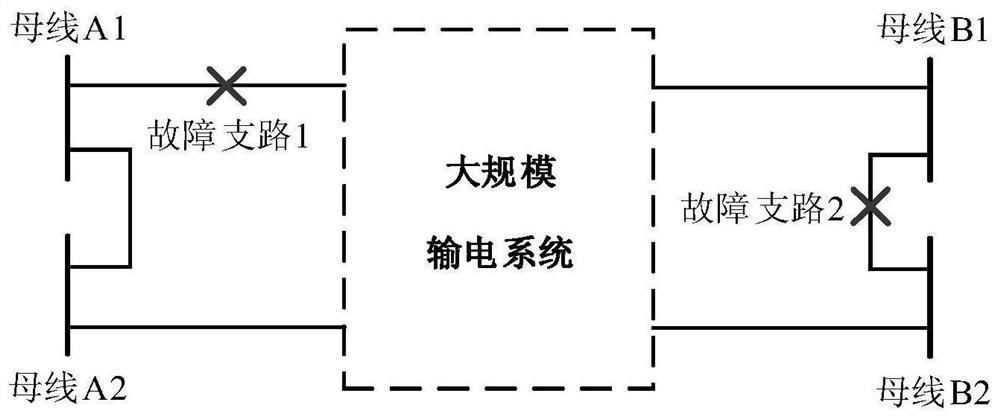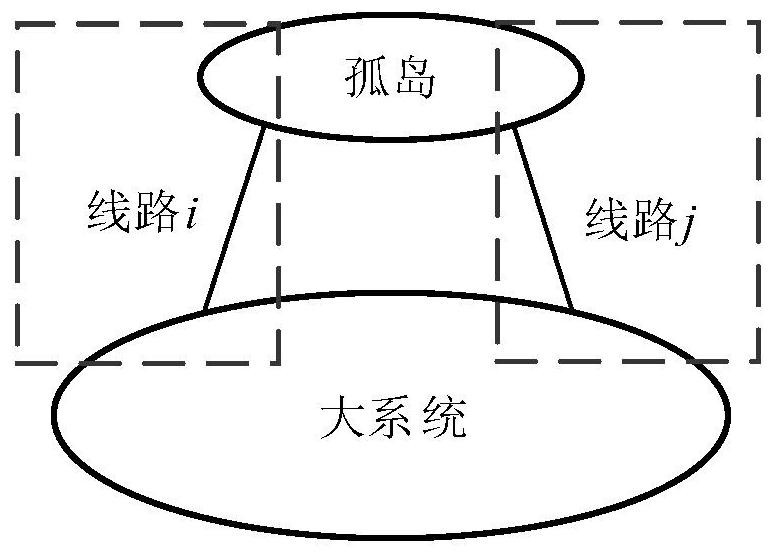Power grid n-k fault analysis and screening method and device based on impact increment
A technology of fault analysis and screening methods, which is applied in the direction of circuit devices, electrical components, AC network circuits, etc., can solve problems such as increased fault probability and number of faults, difficult high-impact fault sets, and difficult to accurately predict fault probability, achieving accuracy and Coordinated and controllable speed, reduced calculation amount, and improved weight effect
- Summary
- Abstract
- Description
- Claims
- Application Information
AI Technical Summary
Problems solved by technology
Method used
Image
Examples
Embodiment 1
[0046] N-k fault impact calculation method based on impact increment, see figure 1 , the embodiments of the present invention will be described in further detail below. 101-113 are the detailed steps of the calculation method.
[0047]101: Input IEEE RTS 79 system data, including: N-k fault order, accurately calculated low-order fault state order N CTG value and initialization fault order k=1;
[0048] 102: Use the independence criterion to judge the independence among all branch devices;
[0049] 103: Create k-order state set Ω according to formula (4) s k ;
[0050] 104: From the state set Ω s k Select IEEE RTS 79 System Status s;
[0051] 105: Determine whether the faulty devices in the state s are independent of each other, if the components are independent of each other, go back to step 104; otherwise, go to step 106;
[0052] 106: Calculate the effect of IEEE RTS 79 system state s using the OPF algorithm I s ;
[0053] 107: Calculate the influence increment ΔI...
Embodiment 2
[0074] The scheme in Example 1 is further introduced below in conjunction with specific calculation formulas and examples, and the details are described below:
[0075] 201: Obtain the calculation formula of the impact increment based on the reliability index calculation formula of the impact increment, and then obtain the standard calculation formula of the N-k fault impact based on the impact increment;
[0076] The traditional state enumeration method reliability index formula is as follows:
[0077]
[0078] In the formula, I(s) is the influence function of the system state s, that is, the load reduction amount (MW) of the system state s, and P(s) is the probability of occurrence of s.
[0079] According to formula (1), the calculation formula of reliability index based on influence increment is derived:
[0080]
[0081] In the formula, ΔI s is the influence increment of the system state s, which can be calculated by formula (3), u i is the unavailability rate of...
Embodiment 3
[0125] In the following, with reference to specific examples, for the N-k fault analysis and screening method based on the impact increment proposed in the embodiment of the present invention, this example takes the IEEE RTS79 node system as an example to carry out simulation analysis and verification. The IEEE RTS79 node system topology diagram is as follows Figure 5 shown in the following description:
[0126] The IEEE RTS 79 system includes 32 generators, 33 transmission lines, 5 transformers, and 17 load nodes, with a total installed capacity of 3405MW and a maximum system load of 2850MW.
[0127] 1) Analysis of calculation accuracy
[0128] The State ENumeratioN method (SE) is used to enumerate all possible N-1, N-2 and N-3 faults in the IEEE RTS 79 test system. , IISE) to calculate the influence of each order of fault states. Since the number of N-4 and N-5 faults is too large, when using the Monte Carlo method (MoNte Carlo method, MCS) to sample N-4 and N-5 faults, t...
PUM
 Login to View More
Login to View More Abstract
Description
Claims
Application Information
 Login to View More
Login to View More - R&D
- Intellectual Property
- Life Sciences
- Materials
- Tech Scout
- Unparalleled Data Quality
- Higher Quality Content
- 60% Fewer Hallucinations
Browse by: Latest US Patents, China's latest patents, Technical Efficacy Thesaurus, Application Domain, Technology Topic, Popular Technical Reports.
© 2025 PatSnap. All rights reserved.Legal|Privacy policy|Modern Slavery Act Transparency Statement|Sitemap|About US| Contact US: help@patsnap.com



